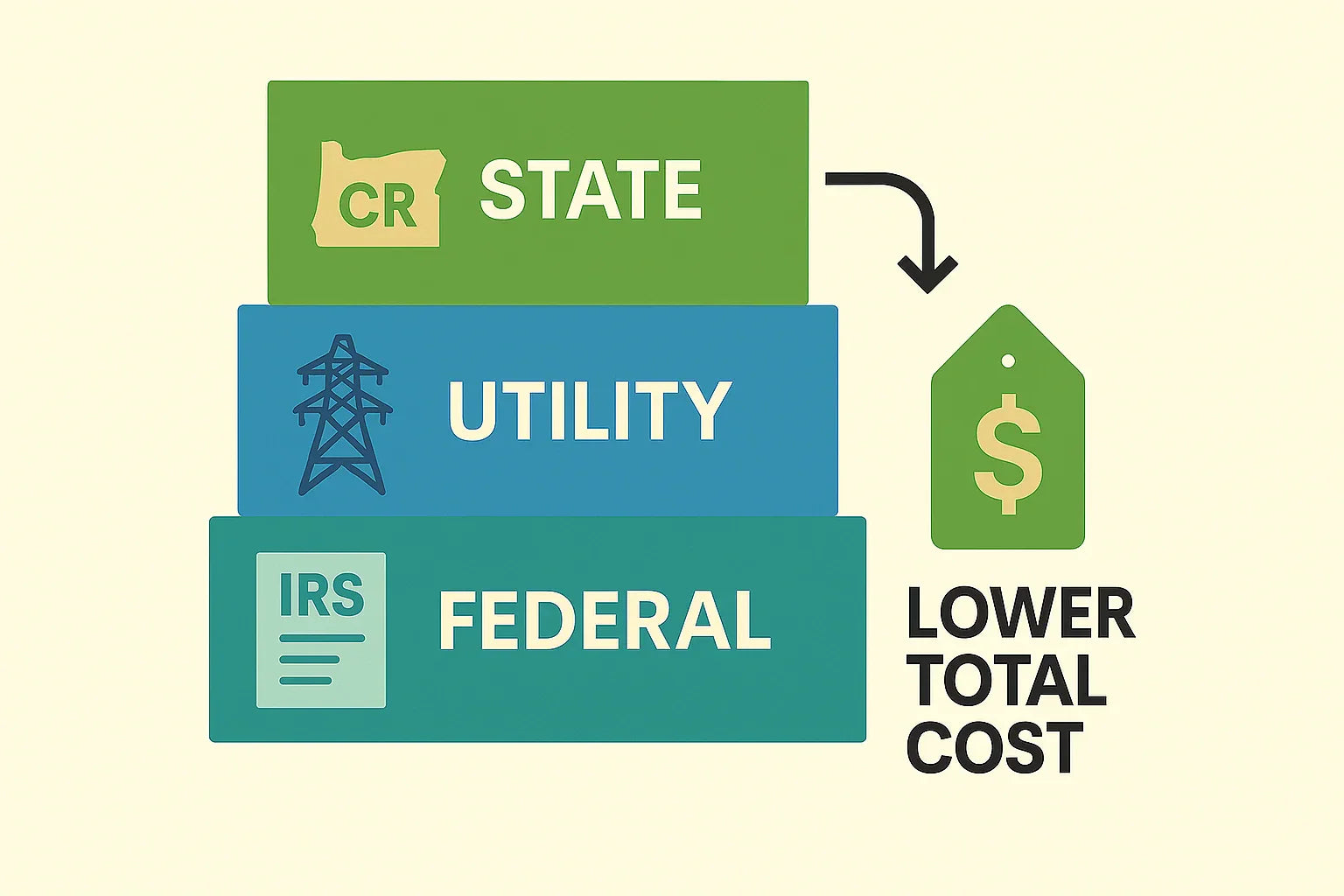If you’ve heard about federal HVAC tax credits in 2025, that’s just the tip of the savings iceberg. Many states are offering their own rebates and incentive programs, and they can be worth hundreds—or even thousands—of extra dollars. But the programs vary widely depending on where you live.
So if you’re wondering how much your state offers, what qualifies, and how to claim your rebate, this guide has you covered. Let’s dive into what’s available, how to stack it with federal incentives, and how to avoid common pitfalls.
Why State HVAC Rebates Matter
Federal rebates like the High-Efficiency Electric Home Rebate Act (HEEHRA) offer generous support—but they’re not the whole story. Many states are using their own IRA funding or existing clean energy initiatives to provide additional rebates for qualifying HVAC upgrades.
Here’s why that matters:
-
Stackable savings: Most state rebates can be combined with federal tax credits and utility incentives.
-
Location-based support: Some states offer enhanced rebates based on income, climate, or local energy goals.
-
Bonus offers: In many cases, low- to moderate-income households can qualify for additional benefits.
Want a complete view of your area’s programs? The DSIRE database is the go-to source for incentive listings by ZIP code, state, and program type.
How to Use This Guide
Below, you’ll find a selection of state programs offering notable HVAC rebates in 2025. Please note:
-
Amounts and requirements can change—always check with the program’s administrator before starting your install.
-
Rebates often require licensed installation, specific efficiency ratings, and documentation.
-
Many programs are first-come, first-served until annual funds run out.
Use this guide as your planning roadmap, then confirm the details with your local contractor or utility.
2025 HVAC Rebates by State (Quick Highlights)
California
-
Program: TECH Clean California
-
Rebate: Up to $3,000 for air-source heat pumps
-
Bonus: Extra incentives for electrification or low-income households
-
Administered by: Energy Solutions
New York
-
Program: NYS Clean Heat
-
Rebate: Up to $10,000 depending on equipment and income
-
Bonus: Financing through NYSERDA
Massachusetts
-
Program: Mass Save
-
Rebate: Up to $10,000 for heat pump installation
-
Bonus: No-cost energy assessments and income-based enhancements
Texas
-
Programs: CenterPoint Energy, Oncor, and Austin Energy
-
Rebate: $500–$2,000 for qualifying heat pumps and smart thermostats
-
Bonus: Some cities offer additional electrification credits
Florida
-
Programs: FPL, Duke Energy
-
Rebate: $400–$1,500 for ENERGY STAR® central air systems
-
Requirements: Licensed installation and efficiency verification
Pennsylvania
-
Programs: PECO, Duquesne Light
-
Rebate: $300–$1,200 for heat pumps, ductless systems, or smart thermostats
-
Bonus: Extra rebates for going all-electric
Oregon
-
Program: Energy Trust of Oregon
-
Rebate: Up to $2,000 for heat pumps and duct sealing
-
Bonus: Additional support for low-income households
What These Programs Typically Require
Whether you’re in California or Pennsylvania, most state HVAC rebate programs share a few common requirements:
H4: 1. Licensed Contractor Installation
You typically must use a participating or certified contractor. DIY installs are almost always excluded.
H4: 2. Qualifying Equipment
Systems must meet ENERGY STAR® or CEE Tier 1 or higher efficiency standards. Look for SEER2 and HSPF2 ratings that exceed local code.
H4: 3. Proper Documentation
Expect to submit:
-
AHRI Certificate
-
Itemized invoice
-
Model and serial numbers
-
Completed rebate forms
H4: 4. Timely Submission
Some programs require pre-approval. Others require submission within 30–90 days of installation. Missing that window could mean missing your rebate.
📎 Not sure if your system qualifies? Review this first:
👉 2025 HVAC Tax Credits & Rebates Explained
Pro Tips to Maximize Your Rebate Stack
If you want to get the most money back, here’s what I recommend:
✅ Ask your HVAC pro about rebate eligibility before you sign anything.
Good contractors will know the paperwork and can guide you through pre-approvals or required forms.
✅ Combine state rebates with utility incentives.
Most utility companies (like Duke Energy or PG&E) have their own HVAC rebates—and you can often claim both.
✅ Use income-based programs if available.
If your household is below 80–150% of area median income, you may qualify for enhanced state or federal incentives.
✅ Track every step.
Keep copies of every receipt, form, and certificate. Some programs audit randomly or require uploads in digital format.
💬 Final Thoughts from Alex Lane
Here’s the bottom line: State HVAC rebates are real money, but they’re easy to miss if you don’t plan ahead. With the right strategy, you could shave $1,000–$10,000+ off your HVAC install—especially if you combine federal tax credits, HEEHRA rebates, and local utility support.
Just don’t assume you’re eligible. Confirm every detail, keep your paperwork tight, and install only after verifying the requirements. Your comfort system is a major investment—might as well make the most of it.
📌 Want to know how to actually claim your tax credit once it’s installed? That’s up next:
👉 How to Claim an HVAC Tax Credit on Your 2025 Return
Alex Lane
Your Home Comfort Advocate







